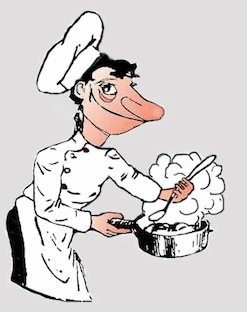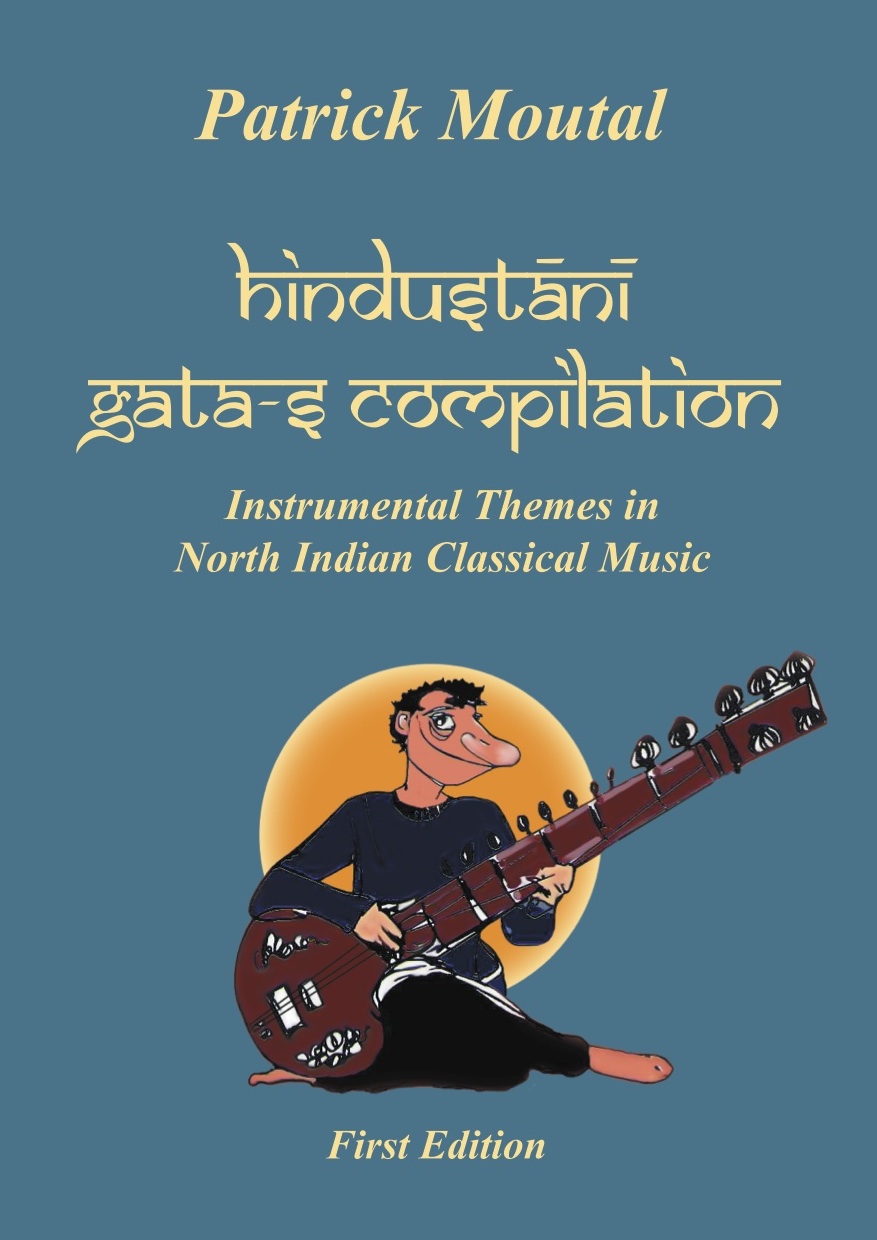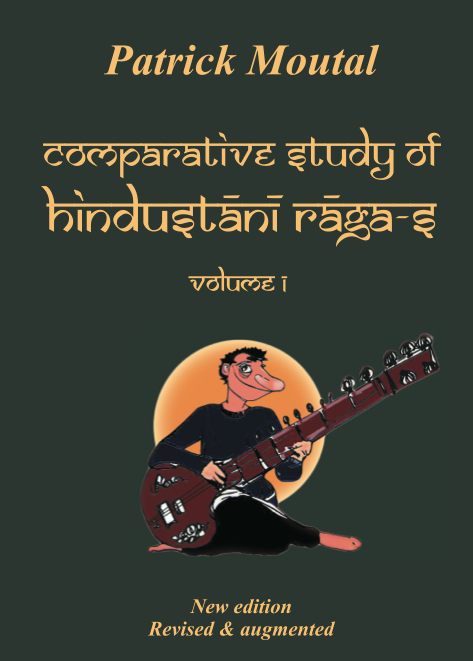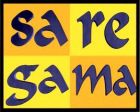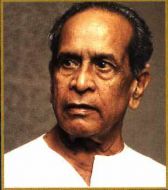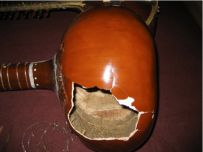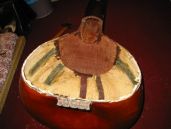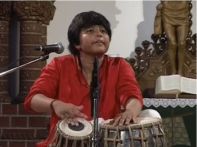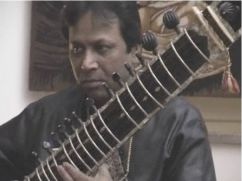 pdf list of the 834 audio and video recordings available on the site (April 4, 2014).
pdf list of the 834 audio and video recordings available on the site (April 4, 2014).
Lists have been alphabetically sorted by rag names & by artists.
You must be a registered user (through login/password) to access the whole collection.
 Please, never upload recordings to YouTube or the same. It takes me a lot of time to manage and update the site. Believe me, it's work and if I had wanted my posts to be on YouTube, MySpace etc. I would have done it myself !
Please, never upload recordings to YouTube or the same. It takes me a lot of time to manage and update the site. Believe me, it's work and if I had wanted my posts to be on YouTube, MySpace etc. I would have done it myself !
List of Indian Music recordings (video / audio) sorted by Rags
List of Indian Music recordings (video / audio) sorted by Artists
Papa : "Gaga, Dani ?"
Gad : "Ah ! Pas Dani, gaga d'Annie !"
Sa Dame, Annie, garait sa Nissan, y paraît. Raide, Annie passa. Pas d'arrêt.
Papa, pas réparé d'Annie, s'agaça, dard égaré.
Papa : "Pas d'appâts, Madame Annie ... "
Dani s'anima : "Nie pas, Papa ! ".
Papa part, hennit "Padam, ah ! Padam, ah !"
Sa manie : réparer. Dada d'Annie : Paganini. Papa, Sam, a pas ça ; pas sa gamme, à Papa … Gad a ni ça, ni ça !
Papa garé, réparé d'Annie ? Papa n'y paraît pas : "Ni s'amarrer, ni s'égarer !"
Gad à Dani : "Pas d'Annie ?!?"
Papa : "ça passe, ça, … Gare, Emma !"

An article about the visit of Shahid Parvez in Pakistan, in 2006, by Hassan Azad.
You may listen to an audio recording of rag Bageshree which the Ustad performed at that time.
(Archive presented by Hassan Azad).
| Shahid Parvez in Pakistan |
Pandit Bhimsen Joshi est décédé hier, lundi 24 janvier 2011, à l'âge de 89 ans, dans un hôpital de Pune, en Inde. Né le 4 février 1922, élève de Sawai Gandharva, il était le principal représentant de la Kirana Gharana et pour moi, le plus grand chanteur vivant de l'Inde d'aujourd'hui. Son décès est une très grande perte pour la Musique.
Vous pouvez écouter des enregistrements audio ainsi que des vidéos de Panditji sur le site.
Pandit Bhimsen Joshi passed away yesterday, on january 24, 2011, at the age of 89, in a Pune hospital, India. Born on february 4, 1922, he had been the pupil of late Sawai Gandharva, and Bhimsenji was the main exponent of Kirana Gharana. For me, he was the best living singer of Hindustani Rag Sangeet. His demise is a really huge loss for Music.
You may listen mp3 audio recordings and watch videos of Panditji on the site.
The internet as a resource for musical ideas - by Hassan Azad
This article is addressed principally to the advanced student of sitar in the West. The East, especially Japan and China, have produced world-class musicians who play western music and have contributed to all aspects of this music. Yet, despite the interest in the music of the Subcontinent since the early sixties and the immense popularity this music enjoys amongst professional western musicians, there seem to be no performers of note – at least to my knowledge- which the West has produced in this genre. What could be the reason? Is it that the West has perfected a method of education which has allowed this music to take root in the East? Is it the numerous studies which have been composed by outstanding composers which has facilitated its transmission?
Read the whole article in pdf format :
|
The internet as a resource for musical ideas |
J'avais réalisé ce petit film pour Laurent Cerveau, il y a déjà bien longtemps. A l'époque, il était à Cupertino, dans les Saints des Saints d'Apple, en train de nous concocter iCal et iSync. Souvenirs, souvenirs.
Ayant remis la main dessus (sur le film, pas sur Laurent), j'espère que cela pourra se révéler utile pour ceux qui s'énervent et seraient presque prêts à fracasser le sitar après moult essais infructueux. Le secret d'un parda bien ligaturé est de tendre la cordelette (en soie ou synthétique) à tout rompre à chaque tour. Pour se faire, on peut entourer la cordelette autour de sa main. Sur certains sitars, il se peut que la fente dans laquelle on passe le fil, soit coupante, avec des angles trop aigus. Il faut bien sûr alors, poncer et limer le laiton pour en adoucir les angles. Placé correctement sur le manche, il ne doit absoluement pas bouger. Un parda bien monté restera en place très longtemps, même en cas de pratique intensive.
Enfin terminé. Quel bordel ! Vous pouvez regarder des photos des différentes étapes de la réparation. Ce sitar m'a été apporté en réparation par David Kleiner. L'instrument a été cassé pendant le transport en avion. Quelques morceaux de tumba (gourde) manquaient et d'autres étaient trop petits pour que l'on puisse les utiliser.
Après avoir enlevé les bandes de backelite (un matériau, comme chacun sait, constitué de phénol formaldehyde, un ancien type de plastique, inventé aux USA en 1907 par Léo Bakeland, dont la particularité est qu'on ne peut, après lui avoir donné sa forme, en altérer sa forme ou le faire fondre à la chaleur) tout autour du tumba avec la difficulté habituelle puisqu'on en casse invariablement de petits morceaux, je détablai le tabli (table du sitar) qui avait été collé avec un matériau sûrement interdit par la Convention de Genève ! tant la colle était dure - ce qui ne se fait évidemment pas ! Je remarquai alors 2 choses bizarres : La face interne du tumba avait été tapissée d'une mixture de poussière de bois/courge et de colle comme pour réenforcer la gourde, ce qui pourrait laisser penser que cette dernière était déjà endommagée à la fabrication. De plus, il y avait une horrible pièce de bois (voir photo sur la page dédiée) dépassant d'un côté du joint entre tumba et danda (manche) qui aurait dû être au moins coupée à ras. Sans commentaire sur le type (je n'ose utiliser le noble mot luthier) qui a fabriqué le sitar.
Je commençai alors à reconstituer le puzzle et à coller ce qui pouvait l'être. Pour les morceaux manquants, je prélevai - comme pour des greffes - de petits bouts de la gourde à partir de la face interne, morceaux que je taillai au canif et enfonçai en force, au marteau. S'ensuivit le colmatage à la pate à bois, un long ponçage, re-pate à bois, reponçage. Je collai alors le tabli au tumba. Pour combler les interstices entre tabli et tumba, colmatage à la pate à bois, puis ponçage. Je replaçai alors les bandes décorées en backelite puis passai 4 couches d'une mixture de ma composition pour donner à la gourde la consistance et la pigmentation désirées. Après ponçage, je passai successivement 3 couches de vernis au tempon. Je dus fabriquer une pièce d'os servant de support au chikari et faire un nouveau trou, l'ancien étant inopérationnel puisque l'os s'était cassé à ras. Ne restait plus qu'à mettre les cordes, à poncer les chevalets, qu'à coller des cales de bois sur les pieds des chevalets, pour en donner l'angle correct et enfin, à faire les jawaris - c.a.d. à "faire le son". Le travail était enfin achevé après avoir verni les chevalets en place et accroché l'instrument réparé au mur.
Enfin, pour naviguer rapidement dans tous les Albums de photos de la page Musique Indienne, vous pouvez cliquer dans ce lien.
Just finished it. What a mess ! You may see pictures of the different stages of the reparation. The sitar was brought to me for repair by David Kleiner. It got broken in pieces during the flight. Some tumba (gourd) pieces were missing and others were so small that I could do nothing with them.
After removing the backelite stripes (as everyone knowsn a material made of phenol formaldehyde - old type of plastic - invented in 1907 by Leo Bakeland in USA, which, once shaped, cannot be softened by application of heat) around the tumba with the usual difficulty as it unvariably gets broken at places, I removed the tabli (sitar table) which had been glued with a material which is surely prohibited by the Geneva Convention - so hard it was to separate it from the tumba ! I then noticed two weird things : the inner tumba was coated with a mixture of wood powder and glue as to reinforce it... It could mean that the tumba was already damaged or broken at places. The second thing was that there was an uncanny wood piece sticking out of the joint between tumba and neck... No comments on the guy who did it.
I then started to reconstitute the puzzle and glued what I could together. For missing pieces, I withheld some material from inside the gourd, cut it to size and fitted it. I then finished up with wood paste, sandpapered it for long, reput some wood paste, resandpapered. Tabli was reglued to tumba. As they were interstices, I filled them up with wood paste, sandpapered, replaced the backelite decoration stripes and applied 4 layers of a coating of my composition to give color and consistancy. After sandpapering, I applied 3 layers of alcohol varnish with a piece of cloth. I shaped a piece of bone for the higher chikari as the original one was clean broken at the level of the neck and had to drill a new hole for placing it. Strings were replaced, Bridges were shaped and pieces of wood added to give the proper angle. At last, jawaris were done. Work was done after varnishing the bridges into place and hanging the sitar on the wall !
Last but not least, to quickly browse the contents of all Picture Albums of the Indian Music Page, you may click this link.
Réparation du tanpura de ma classe au CNSM, en mars 2003. Ce n'était pas une mince affaire ! Cliquez le lien pour voir le travail en photos ou, mieux encore, pour voir rapidement le contenu de tous les Albums de photos de la section musique indienne, cliquez ce lien.
Reparation of my class room tanpura, in march 2003. That was something ! Click on the link to see it in pictures or, in order to browse quickly, in a nicer fashion, through all the Music Picture Albums of the Indian Music section, you may click on this link.
You'll find a video excerpt (08:18) 15,2MB, of a tabla recital, given in Berlin, by Rimpa Siva, a very young and talented tabla player from Calcutta. I think the video was shot in 2002 while she was barely sixteen years old.
She mainly learned from her father Swapan Siva, pupîl of late Karamatullah Khan of Farukhabad Gharana.
The harmonium accompaniment is by Sankha Chaterjee, a well-known tabla player from Calcutta.
That DVD has been produced by Franco Rivoira, the italian gentleman who made that excellent DVD of Shaheed Parvez. Its selling price is 25€ - postal charges extra. You may send a mail to the publisher to order it.
Anew double DVD of Shahid Parvez "A journey with Saraswati" just came out in Italy. It is published by DhereDhereVideo. Don't waste a second ! eMail them right away to get it ! Total time is approximately 180 minutes and its costs is only 30€, postal charges extra.
This DVD is the most well-made DVD I have ever seen on Indian Music until now. Franco Rivoira is a true amateur of Rag Sangeet, a sincere student of Sankha Chaterjee and a true gentleman - in the literary sense of the term. That is probably why we don't have here a mere "product" thrown in the market but a DVD filmed and conceived with all love, care and attention possible.
Shahid Parvez plays Puriya Kalyan Alap, Jod, Jhala, Vilambit & Drut Teental. He also unfolds Shahana, Alap, Jhaptal, Drut Ektal, then a Misra Piloo with an Alap, Deepchandi and 2 Drut Teental compositions - of which the first one seems to me to be a Zila Kafi Gat.
Last but not least, there is also a pretty lenghty interview of Shahid Parvez in which a number of topics are discussed as well as an interview of Sankha Chaterjee.
With the permission of Franco Rivoira, I have put an excerpts of Shahid's Puriya Kalyan in which he demonstrates his mastery over tan-s. Good download !
